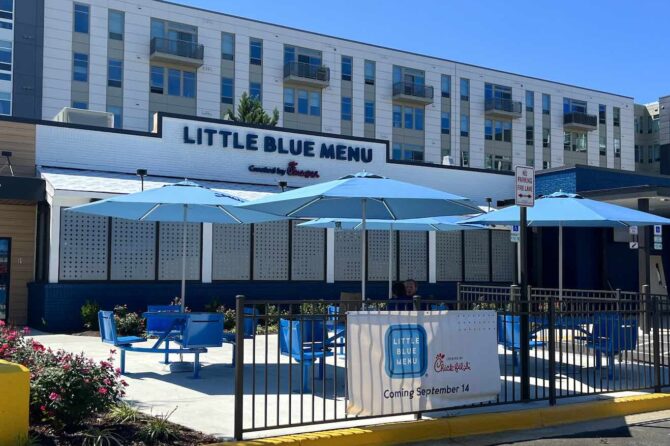WASHINGTON BUSINESS JOURNAL: The District’s plans for reviving its downtown will involve a multipronged approach to make it more livable, from investing in public spaces to lobbying for taller buildings, while easing regulations and restrictions on businesses.
D.C. officials on Monday pulled back the curtain on the Downtown Action Plan, the primary cog in Mayor Muriel Bowser’s five-year D.C. Comeback Plan. The plan, which will be finalized over the next few months, proposes a bevy of programs, from easing restrictions on multifamily development to implementing new business incentives and public safety programs. It has been under development since January 2023.
The plan carries an estimated price tag of $401 million, including $39 million in the upcoming 2025 fiscal year. But on a conference call with reporters, D.C. officials said these resources are urgently needed to stem the “hemorrhaging,” as downtown was responsible pre-pandemic for nearly a quarter of all local fund revenues captured by District coffers.
“The thought is with public money, agencies can leverage grants or federal funding on things like transportation projects which have an 80%-20% match,” said Leona Agouridis, president of theGolden Triangle Business Improvement District, on the call. “The bigger thought is these investments will bring in additional investment from the private sector over a period of time, once we articulate a vision and we’re clear there’s a sense of movingforward.”
Per the draft action plan, downtown D.C. “finds itself at a post-pandemic inflection point,” having “not added nearly enough visitors and residents to offset” the loss of day-to-day activity resulting from remote and hybrid work trends.
“Without intervention,” the plan states, “underutilized commercial space and decreased activity are poised to fuel a self-reinforcing cycle of declining investment, property values, and tax revenues.”
Over the next five years, the plan calls for:
- $82 million in streetscapes improvements, cultural districts and the arts, all geared toward driving up visitorship
- $76 million to “accelerate new economic drivers” like housing and universities
- $54.5 million to improve the quality and quantity of parks and open spaces
- $45 million to attract and retain new office users, including an expansion of the Vitality Fund incentive program
- $40 million to expand retail, services and amenities for residents
- $32 million for “economic evolution,” including business attraction staffing
- $31.5 million for public safety initiatives
- $20 million to support retailers, including grants for pop-up and short-term concepts
- $9.5 million for transportation initiatives
- $2.5 million to market D.C. as a “global learning hub”
- $7.5 million to hire a ombudsman and addition staff to manage the overall effort
Longer term, the plan suggests the District tackle some of its perennial goals with new fervor. For instance, officials said the city should strategically look at ways to increase building heights limited by the federal Height Act, which is likely to require anarduous process against other political forces. At the same time, officials also released the first sketches of the Public Realm Plan, which would require the District gaining more control overNational Park Service-owned squares.
Mayor Muriel Bowser has made downtown’s revitalization a top priority as it faces myriad challenges, including the coming departure of major downtown businesses like CoStar Group Inc., and the potential loss of the Washington Capitals and Mystics for a proposed new venue in Northern Virginia. Downtown D.C.’s 25,000 residents, 320,000 employees and 16 million visitors generated nearly $2.3 billion in local revenues in 2019 — about aquarter the District’s locally generated revenue. The slowdown has already reduced that by about $200 million a year, which officials fear could grow to $436 million annually within the decade if nothing changes.
The funding needed for the Downtown Action Plan is hefty given D.C.’s budget constraints and other priorities. This number is on top of the $500 million the District has already proposed to revitalize Gallery Place-Chinatown if the Caps and Wizardsleave.
In addition to the physical changes, the District is also weighing regulatory updates. The plan, for example, suggests a 10-year moratorium on the Tenant Opportunity to Purchase Act, or TOPA, on new non-replacement housing downtown. TOPA allows tenants the right to buy and renovate their own multifamily communities, but landlords have long complained it makes selling or redevelopingbuildings harder.
Streamlining licensing, permitting, and documentation processes would help small businesses most, Anita Cozart, director of the Office of Planning, said on the call, which would work in tandem with expanding incentives like the office-to-residential conversion tax abatement and an expansion of the Vitality Fund.
“Some of this is beginning a dialogue, making a recommendation of things we believe should be done to spur the recovery of downtown and outside investment,” said Gerren Price, president and CEO of the DowntownDC BID. “Some things will take some space to address in the future.”










